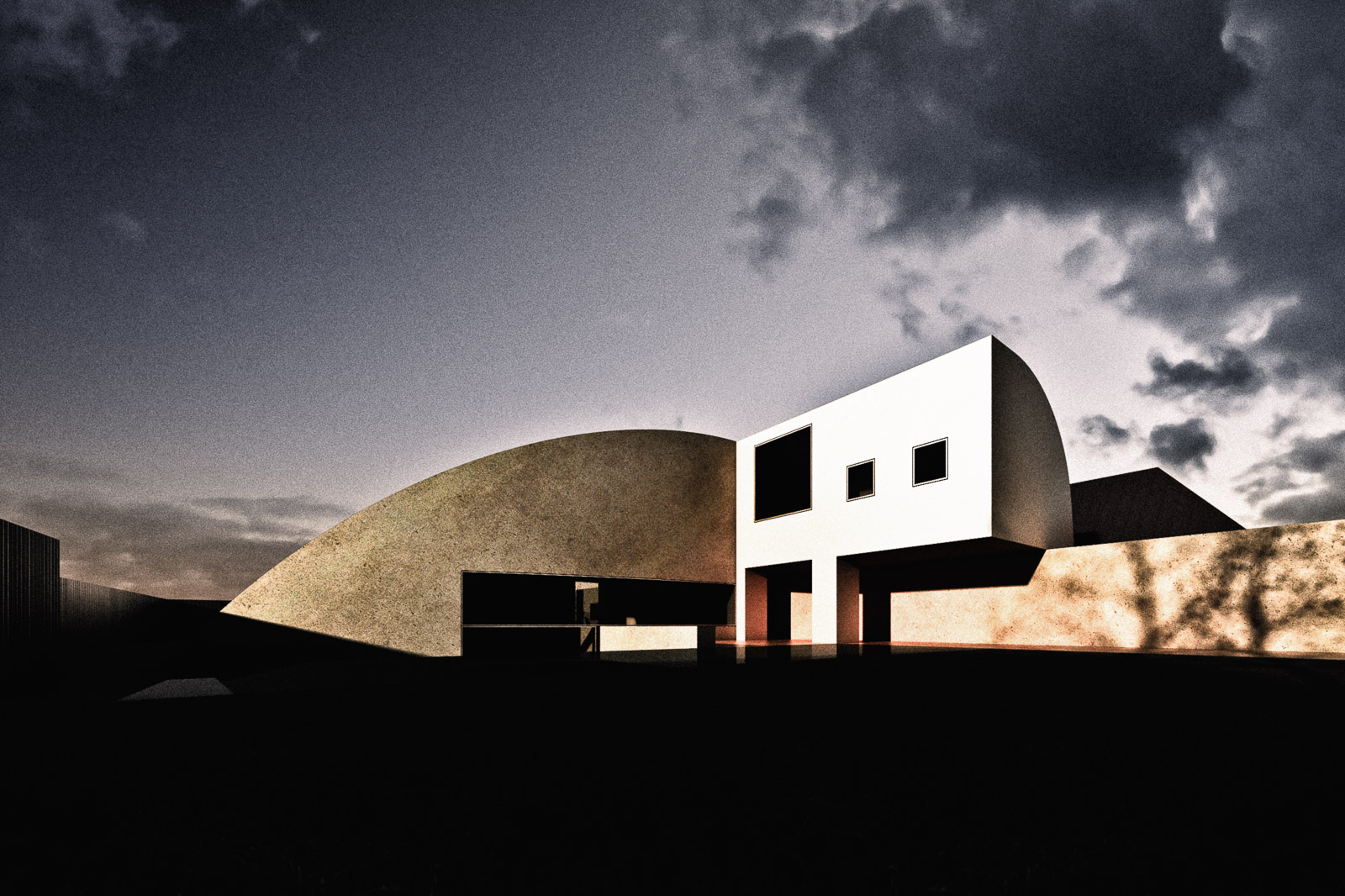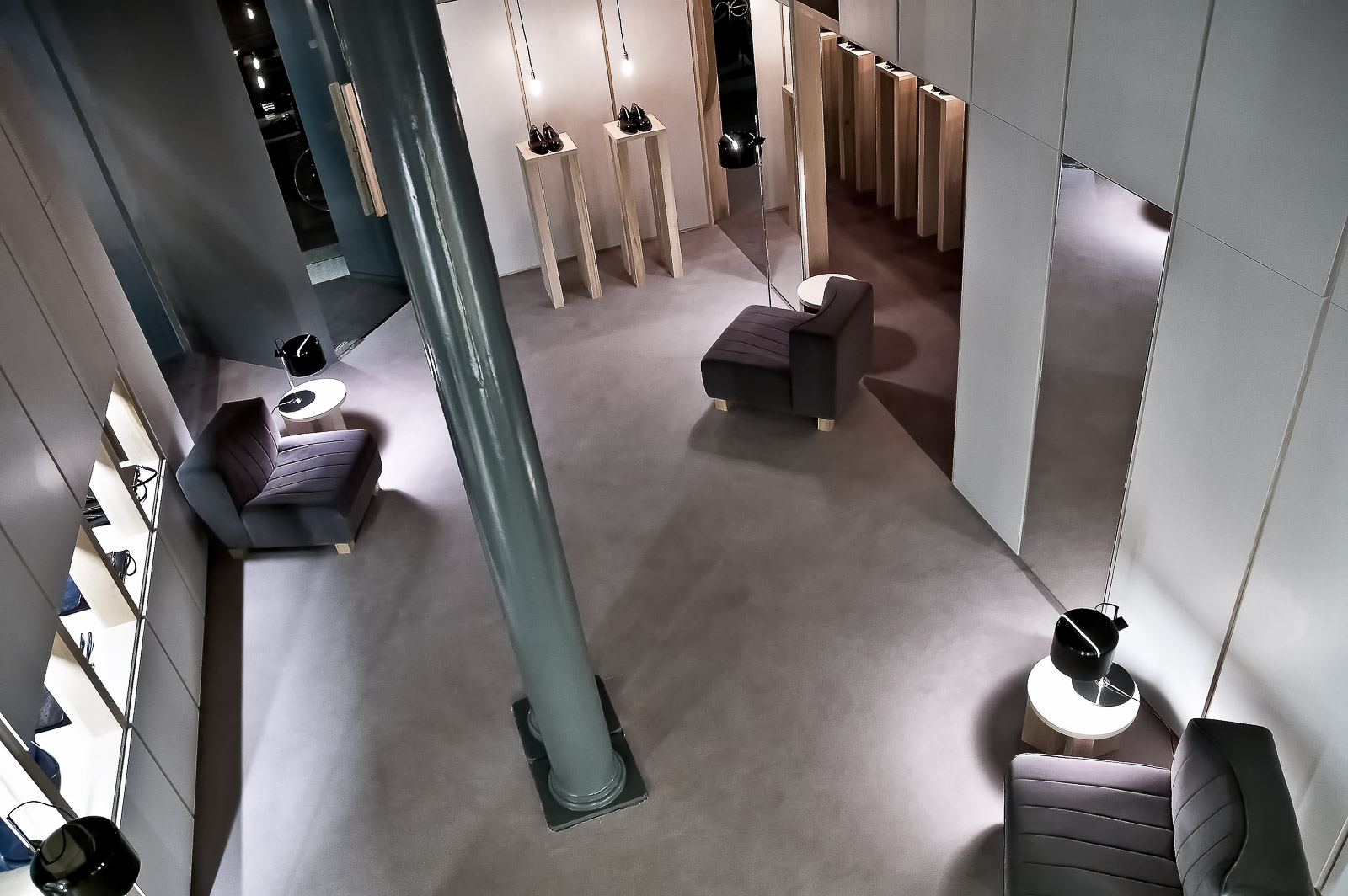Review
Lucie Červená
A remarkable family house construction called the Concrete Moon House by Italian architect Antonino Cardillo was completed on the outskirts of Melbourne at the end of last year. The same author is also the creator of the luxurious men’s shoe and accessories shop Sergio Rossi, opened this April during the Milan Furniture and Design Fair, Salone del Mobile 2010.
The author of Concrete Moon House sees himself not only as an architect but also as a poet. Through his work, he strives to realise the deepest, often irrational desires of his clients. In this context, let us recall his project near Barcelona, House of Convexities, which was significantly inspired by Spanish dance art flamenco. It was published in the magazine Projekt in May 2009.
Concrete Moon House
Inverted keel or concrete moon
The Melbourne construction is a family house consisting of two parts: a public area, which looks like an inverted keel of a boat or a concrete moon, and a private, long, narrow building placed across a rectangular plot. In the photographs, it is the left geometric structure and the adjoining long, narrow object. Antonino Cardillo thematically emphasises ‘sameness and difference’, that is, how the two parts of the house, the two structures, contrast but also complement each other. According to the architect, different things always contain something unifying, even though this reality is often recognised only after very laborious searching. The two parts of the Melbourne house engage in a dialogue, and a common foundation can be seen in them. In one part, despite the apparent difference, we find an element typical of the other part.
Personal experience
‘For me, architecture is not a straightforward process of executing a design based on client requirements’, says Cardillo. ‘It must be a very personal experience, so I must first absorb and study the appearance and atmosphere of the place. I start by gathering a wealth of necessary information. From the history and geographical anchoring of the place to its musical, cinematic, and literary characteristics. Every detail is interesting to me’. The architect further explains: ‘I understand the creative process as holistic—within it, seemingly disparate elements find unforeseen connections and fusion’.
Inspiration from Roman architecture
Cardillo is not fond of extravagant materials—he builds his structures from concrete, wood, and travertine. ‘These are traditional materials derived from the building style of the ancient Romans. In contemporary architecture, a lack of ideas is often masked by the use of dazzling materials. Today’s architecture does not interest me’, says the architect. ‘I am fascinated by ancient architecture, which we cannot fully understand and thus stimulates our imagination’. The modern Concrete Moon is built on almost 800 m². The house’s walls are completely bare, without any type of decoration. The interior space of the ‘living room’ is enormous. Inspiration from Roman architecture, whether due to its monolithic nature or rounded shapes, is evident in the construction.

Antonino Cardillo, Concrete Moon House, 2008, Melbourne. CGI: Antonino Cardillo
Akin to a Cinema Set
Sergio Rossi store
During this year’s international furniture and design fair, Salone del Mobile 2010, a temporary men’s shoe store, Sergio Rossi, was opened in Milan, Italy. As previously mentioned, the author of this very clean, refined interior is again Cardillo. Its arrangement evokes a cathedral’s interior; however, it is a tribute to the modern contemporary man (wearing the Sergio Rossi brand), independent and attractive, who is in a constant process of searching and discovering.
An artwork of wood and velvet
From the outside, there is not much visibility into the store, so the visitor does not lose the element of surprise when entering the 60 m² shop. In the dark space of the original shop, we find an interior reminiscent of a cinematographic set or theatre scenery. The straight lines then reflect the influence of Milan’s modernist landmarks, such as the massive Velasca Tower or Gio Ponti’s tower [Grattacielo Pirelli]. However, Cardillo also found inspiration in the medieval church opposite, the Art Nouveau decorative objects of a nearby palace, and, not least, the original shop interior from the 1980s. This year’s collection of classic men’s shoes, with flexible soles and glossy surfaces, are placed on tall wooden pedestals. They rest on plinths as if they were displayed as precious sculptures or other artistic artefacts. The geometrically precise lines of the interior are softened by long velvet curtains. Sergio Rossi focuses more on women’s fashion trends, but the selection of exclusive men’s shoes is not negligible. ‘The interior of the temporary store expresses the passion and dedication with which we approach our male customers’, says Francesco Russo, the company’s creative director. The store will remain open in its displayed form for two years as part of Sergio Rossi’s worldwide advertising campaign.

Antonino Cardillo, Akin to a Cinema Set, 2010, Milan. Photography: Antonino Cardillo